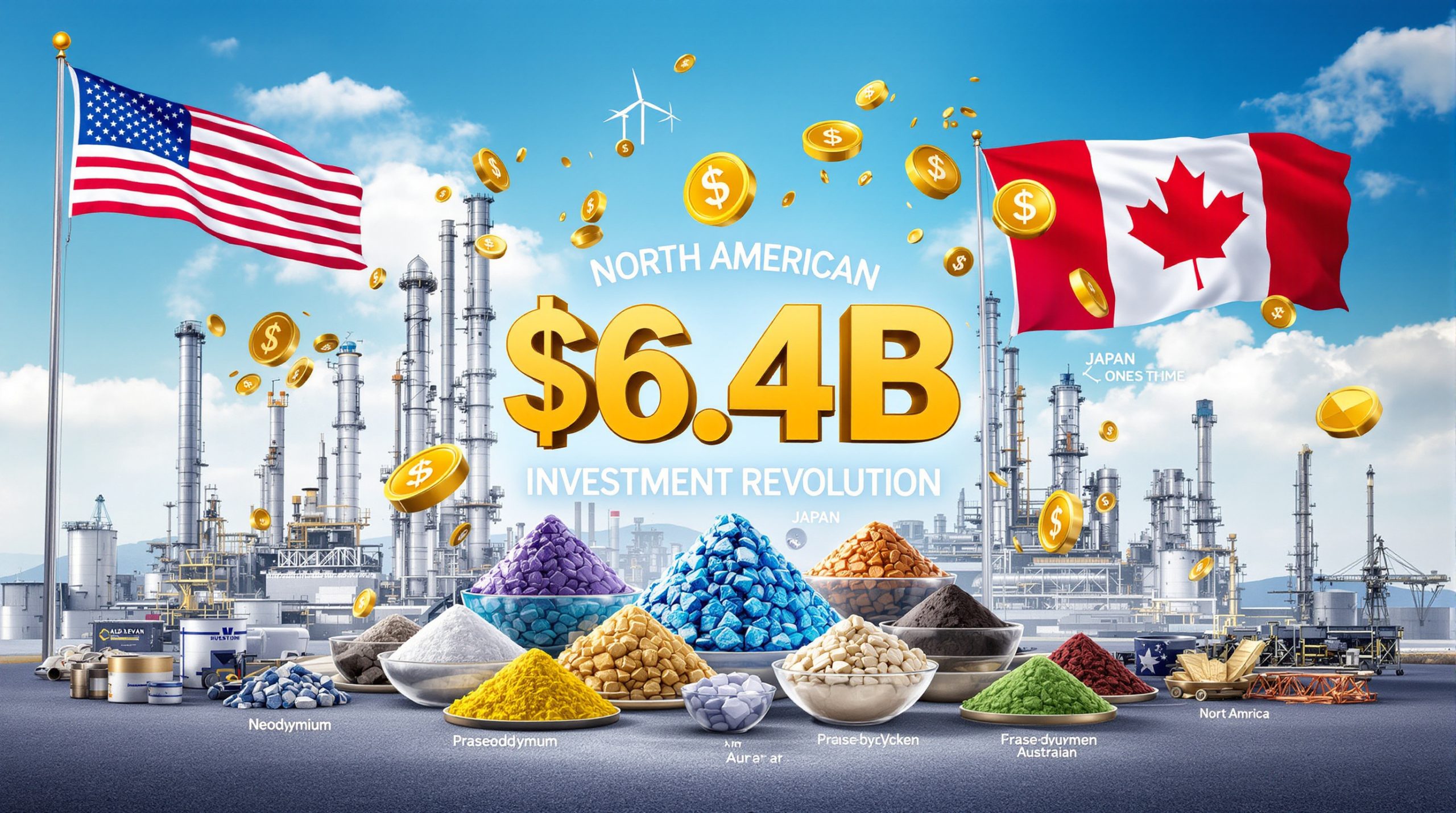What is Kenmare's $340M Mozambique Expansion Project?
Kenmare Resources is undertaking a transformative $340 million capital investment to relocate its primary mining operations to the Nataka orebody in Mozambique. This strategic initiative represents the company's most significant capital project in its history and aims to secure its operational future for decades to come.
The expansion project focuses on moving mining operations from the current Pilivili deposit to Nataka, which represents the final phase of Kenmare's long-term development strategy for its Moma Titanium Minerals Mine in Nampula province. Upon completion, this ambitious project is expected to boost production capacity by approximately 20% across Kenmare's portfolio of titanium minerals and zircon.
"The Nataka expansion isn't just about increasing production—it's about securing our operational footprint for nearly a century," explains Michael Carvill, CEO of Kenmare Resources. "This represents the culmination of our long-term vision for Moma and positions us to remain a reliable global supplier of these critical minerals for generations."
The project timeline indicates phased implementation over 2-3 years, with initial mining operations beginning in the Nataka deposit by mid-2025 and full production capacity expected by 2027. The strategic relocation involves not only mining equipment but also significant processing infrastructure to handle the unique characteristics of the Nataka ore.
How Does the Nataka Expansion Strengthen Kenmare's Market Position?
The Strategic Importance of Nataka Orebody
The Nataka deposit forms the crown jewel of Kenmare's mineral assets, containing approximately 70% of the company's total mineral reserves. This massive resource base provides Kenmare with an operational runway spanning 80-90 years at planned production rates—an extraordinary timeframe in the mining industry where many operations measure their lifespans in decades rather than centuries.
This expansion represents the final major capital investment required to secure the company's long-term production profile at the Moma mine. The Nataka orebody's scale allows Kenmare to engage in long-term planning and customer relationships that few competitors can match.
"Having access to a resource with 70% of our total reserves concentrated in one orebody gives us unparalleled planning visibility," notes Ben Baxter, Kenmare's Operations Director. "While competitors might be concerned about resource depletion within 10-15 years, we're focused on optimizing recovery and processing efficiency for the next half-century."
Production Growth Targets
The Nataka expansion is designed to deliver substantial production increases:
- 20% overall production growth across all product categories
- 15-18% increase in ilmenite output, reaching approximately 1.2 million tonnes annually
- 25-30% boost in higher-value zircon production, enhancing revenue mix
- Improved recovery rates for rutile and other valuable minerals
Beyond raw volume increases, the project also focuses on operational resilience through enhanced flexibility. The introduction of modular mining units allows Kenmare to respond more effectively to market conditions, selectively targeting higher-grade zones during weaker pricing environments.
Market Positioning Benefits
As the world's third-largest producer of titanium minerals and zircon, the Nataka expansion reinforces Kenmare's competitive position through several key advantages:
- Supply reliability: Maintains consistent product delivery even during operational transitions
- Quality consistency: Ensures product specifications remain stable despite changing ore characteristics
- Cost competitiveness: Maintains industry-leading EBITDA margins of 40% despite challenging market conditions
- Customer retention: Strengthens relationships with key customers who value supply security
The expansion also positions Kenmare to benefit from the ongoing industry consolidation trends, as pigment producers increasingly prefer suppliers with long-term resource security and consistent product quality.
What Technical Innovations Are Being Implemented?
Advanced Mining Equipment
The $340 million investment includes significant equipment upgrades specifically designed to handle the unique characteristics of the Nataka orebody:
- Twin dredger system: Two custom-built dredgers costing $66 million, optimized for Nataka's ore profile
- Enhanced wet concentrator plant (WCP): Modified to process the more resilient material found at Nataka
- Advanced slurry transportation systems: Engineered to move material efficiently over longer distances
- Upgraded electrical infrastructure: Supporting increased power requirements while maintaining renewable energy usage
These technical investments are specifically designed to address the challenges presented by Nataka's mineralogy, which differs significantly from Kenmare's previously mined deposits.
"The dredger design incorporates lessons learned from decades of operation in similar environments," explains the company's Technical Director. "We've engineered them with redundant systems and enhanced cutting capabilities to maintain throughput despite the more compact nature of Nataka's ore."
Selective Mining Operations (SMOs)
Perhaps the most innovative aspect of Kenmare's expansion strategy is the introduction of Selective Mining Operations (SMOs)—smaller, more agile mining units that complement the main dredge operation:
- Cost-effective deployment: Each SMO costs approximately $6 million versus $45 million for traditional plants
- Enhanced flexibility: 300 tons per hour processing capacity allows targeted extraction of high-grade pockets
- Rapid relocation capability: Units can be moved between locations in weeks rather than months
- Reduced environmental footprint: Smaller disturbance areas and more precise rehabilitation
These modular units represent a paradigm shift in mineral sands mining, allowing Kenmare to extract value from smaller deposits that would be uneconomical with conventional equipment.
"The SMOs give us an operational agility we've never had before," notes Kenmare's Chief Operating Officer. "During the transition to Nataka, these units will target high-grade zones to maintain production levels while the main dredges are being commissioned."
Processing Adaptations
The Nataka orebody presents unique mineralogical challenges that require significant processing modifications:
- Enhanced magnetic separation circuits: Optimized for the different mineral assemblage in Nataka ore
- Modified flotation parameters: Adjusted for more effective zircon recovery
- Upgraded material handling systems: Designed to process higher throughput volumes
- Advanced automation systems: Improved process control to maintain product quality despite ore variability
The technical team has conducted extensive pilot testing to ensure these modifications deliver the expected performance improvements while maintaining product specifications.
What Are the Financial Implications of the Expansion?
Investment Structure and Funding
The $340 million capital program represents a significant investment for Kenmare, structured to balance growth with financial prudence:
- Phased expenditure: Capital deployment spread over 3-4 years to manage cash flow impact
- Multiple funding sources: Combination of existing cash reserves, operational cash flow, and debt facilities
- Strategic debt management: Maintaining relatively low leverage ratios with peak net debt of $80-85 million
- Balanced approach: Continued dividend payments despite significant capital commitments
This balanced funding approach reflects Kenmare's commitment to maintaining shareholder returns even during periods of intensive capital investment.
"We've structured the funding to maintain our financial flexibility," explains the Chief Financial Officer. "By phasing the capital expenditure and utilizing our strong cash position, we can execute this transformative project while continuing to reward shareholders through our dividend program."
Expected Financial Returns
The project economics indicate robust returns despite current market headwinds:
- Sustained EBITDA margins: Maintaining 40% margins even during market weakness
- Enhanced free cash flow: Significant increase projected post-completion (2026-2027)
- Return on invested capital: Expected to exceed 15% over project lifetime
- Payback period: 5-7 years depending on market conditions
These projections account for current market pressures while recognizing the cyclical nature of mineral commodities markets.
Shareholder Return Strategy
Despite the substantial capital investment, Kenmare maintains its commitment to shareholder returns:
- Dividend continuity: Interim dividend of 8-12 cents per share maintained during expansion
- Flexible final dividend: Adjusted based on year-end market conditions and capital requirements
- Progressive dividend policy: Potential for increased distributions once capital intensity reduces
- Share buyback optionality: Consideration of repurchase programs when leverage targets are achieved
This balanced approach to capital allocation reflects management's confidence in the project's long-term value creation potential while acknowledging the importance of near-term shareholder returns.
How Does Kenmare Navigate Mozambique's Regulatory Environment?
Government Relations and Agreements
Kenmare's nearly four-decade presence in Mozambique has established strong governmental relationships, though ongoing engagement remains essential:
- Implementation agreement renewal: Currently negotiating terms with President Chapo's administration
- Royalty discussions: Focused on maintaining competitive rates while ensuring fair value for Mozambique
- Fiscal stability provisions: Seeking long-term certainty on taxation and regulatory frameworks
- Foreign exchange mechanisms: Working to optimize currency conversion processes for operational needs
The company's approach emphasizes mutual benefit and long-term partnership rather than short-term advantage.
"Our negotiations with the government are based on a shared understanding that Kenmare's success and Mozambique's development are intrinsically linked," notes Kenmare's Government Relations Director. "We're seeking terms that reflect both the strategic importance of our operation and the legitimate expectations of our host nation."
Local Integration and Economic Impact
Kenmare's economic footprint in Mozambique extends well beyond direct mining activities:
- Employment creation: Approximately 1,700 people employed with 97% being Mozambican nationals
- Skills development: Comprehensive training programs that have created a skilled local workforce
- Infrastructure investment: Roads, power distribution, and water systems that benefit surrounding communities
- Supply chain development: Local procurement initiatives that have created a network of Mozambican suppliers
This holistic approach to community integration has established Kenmare as a model for responsible mining investment in Mozambique.
Political Risk Management
Kenmare's approach to managing political risk combines proactive engagement with pragmatic contingency planning:
- Multi-level government engagement: Regular interaction with officials from local to national levels
- Economic interdependence: Positioning as a critical contributor to Mozambique's export earnings
- Community alignment: Strong local support creates additional stability through community advocacy
- Operational adaptability: Maintaining flexibility to respond to potential regulatory changes
This multifaceted approach has enabled Kenmare to navigate multiple political transitions while maintaining operational continuity.
What Market Conditions Is Kenmare Facing?
Current Market Challenges
The titanium dioxide sector currently faces significant headwinds that impact all producers:
- Price pressure: Approximately 30-35% decline in titanium feedstock prices since 2023 peaks
- Supply expansion: New market entrants attracted by previously high prices creating temporary oversupply
- Chinese processing dominance: Increased concentrate flow to Chinese facilities putting pressure on Western processors
- Demand softness: Cyclical weakness in construction and manufacturing sectors affecting pigment consumption
These challenging market conditions have created a difficult operating environment across the industry.
"We're currently in the trough of what remains a cyclical business," acknowledges Michael Carvill. "New supply attracted by the high prices of 2021-2023 has entered the market just as demand has softened, creating temporary imbalances that are affecting all producers."
Competitive Advantages
Despite these headwinds, Kenmare maintains several structural advantages:
- Product quality consistency: Premium products that maintain specifications even during challenging market conditions
- Customer concentration benefits: As pigment manufacturers reduce supplier numbers from eight to two over seven years
- ESG credentials: 95% renewable energy usage creating marketing advantages with environmentally conscious customers
- Operational reliability: Consistent delivery performance that customers value during supply chain disruptions
These advantages allow Kenmare to maintain market share and pricing premiums even during industry downturns.
Recovery Indicators
Several factors point to potential market improvement in the medium term:
- EU tariffs impact: 38-39% duties on Chinese pigment imports improving Western customer utilization
- GDP correlation: Historical relationship between economic growth and titanium dioxide consumption
- Supply rationalization: High-cost producers likely to exit during extended price weakness
- Inventory normalization: Customer destocking cycle nearing completion in key markets
Industry analysts project potential market rebalancing by late 2025 or early 2026, coinciding with Kenmare's production expansion timeline.
How Does the Expansion Fit Into Kenmare's Long-Term Strategy?
Multi-Decade Resource Development
The Nataka expansion represents the culmination of Kenmare's strategic vision for the Moma resource:
- Sequential development: Progression from Namalope to Pilivili and now to Nataka following a logical resource path
- Resource optimization: Moving from smaller deposits to the main Nataka orebody that contains 70% of reserves
- Operational continuity: Ensuring seamless transition between deposits to maintain production consistency
- Generational planning: Establishing foundation for 80-90 years of operations based on current reserve estimates
This methodical approach demonstrates Kenmare's commitment to maximizing the value of its mineral concession over multiple decades.
Operational Excellence Focus
Beyond expansion, Kenmare's strategic priorities emphasize continuous improvement:
- Efficiency initiatives: Ongoing programs targeting 2-3% annual productivity improvements
- Technology adoption: Implementation of advanced process control and predictive maintenance systems
- Value-added product development: Research into specialized grades for high-margin applications
- By-product monetization: Exploring markets for previously unrecovered minerals in the ore body
These operational excellence initiatives complement the expansion project by enhancing returns from existing assets.
ESG Leadership
Kenmare's sustainable mining transformation credentials have become increasingly important to customers and investors:
- Renewable energy dominance: 95% of operations powered by renewable sources, primarily hydroelectricity
- Community development: Comprehensive programs focusing on education, healthcare, and economic diversification
- Progressive rehabilitation: Concurrent land restoration returning mined areas to productive agricultural use
- Biodiversity protection: Conservation initiatives preserving native species and ecosystems
These initiatives position Kenmare as an industry leader in responsible resource development at a time when ESG considerations are increasingly influencing customer and investor decisions.
What Investment Opportunities Does Kenmare Present?
Valuation Considerations
Current market conditions create potential investment opportunities as Kenmare trades at metrics that may undervalue its long-term assets:
- Trading below replacement cost: Current enterprise value significantly below the cost to replicate assets
- Historical bid interest: Previous acquisition approach at substantial premium to current levels
- Cyclical positioning: Share price reflecting trough conditions in a historically cyclical market
- Resource value discount: Minimal market value attributed to the extensive 80-90 year reserve base
These factors suggest potential valuation upside as the company executes its expansion strategy and market conditions normalize.
"The current valuation presents an interesting opportunity for patient investors," notes one industry analyst. "Kenmare's trading metrics don't reflect the substantial resource base, especially considering the strategic importance of these minerals in global supply chains."
Growth Catalysts
Several factors could drive future value creation for investors:
- Production increase: 20% volume growth upon expansion completion
- Cash flow inflection: Significant free cash flow generation post-capex cycle
- Market recovery potential: Cyclical upswing as supply-demand fundamentals rebalance
- Dividend growth: Potential for increased shareholder returns as capital intensity declines
These catalysts align with Kenmare's strategic timeline, potentially creating a favorable investment scenario as the expansion project nears completion.
Risk-Reward Profile
The investment thesis balances several key considerations:
- Near-term headwinds: Capital intensity and market weakness creating temporary pressure
- Medium-term opportunities: Production growth and potential market recovery in 2-3 year timeframe
- Long-term security: Unparalleled resource visibility with 80-90 years of operations
- Geopolitical considerations: Mozambique exposure balanced against critical mineral security benefits
For investors with appropriate risk tolerance and investment horizons, this profile may offer an attractive opportunity to gain exposure to critical minerals with substantial leverage to any market recovery.
How Does Kenmare Fit Into the Critical Minerals Supply Chain?
Strategic Importance of Titanium Minerals
Titanium dioxide and related minerals play an essential role in modern industrial economies:
- Diverse applications: Critical inputs for construction materials, automotive components, aerospace applications, and consumer goods
- Limited substitution options: Few viable alternatives for titanium dioxide's properties in most applications
- Growth correlation: Consumption closely tied to GDP growth and urbanization trends
- Defense applications: Strategic importance for military equipment and national security
These factors contribute to titanium minerals' designation as strategically important in many jurisdictions, including the EU's Critical Raw Materials Act and similar US initiatives.
Supply Chain Diversification Value
Kenmare offers Western customers a valuable alternative to Chinese-dominated supply chains:
- Geographic diversification: Non-Chinese source in an increasingly concentrated market
- ESG compliance: Operations meeting Western regulatory standards with 95% renewable energy usage
- Political stability: Mozambique's relatively stable democratic system compared to some competing jurisdictions
- Supply reliability: Track record of consistent delivery even during global disruptions
As geopolitical tensions increase focus on supply chain security, these attributes may command increasing premium from customers seeking to reduce dependency on any single source region.
Industry Consolidation Benefits
Kenmare stands to benefit from ongoing mining industry evolution in both mining and pigment manufacturing:
- Customer supplier rationalization: Pigment manufacturers reportedly reducing supplier relationships from
Ready to Spot the Next Major Mineral Discovery?
Discover how significant mineral discoveries like Kenmare's Nataka expansion can generate substantial returns by exploring Discovery Alert's dedicated discoveries page, where our proprietary Discovery IQ model provides real-time alerts on ASX announcements with significant discovery potential.




